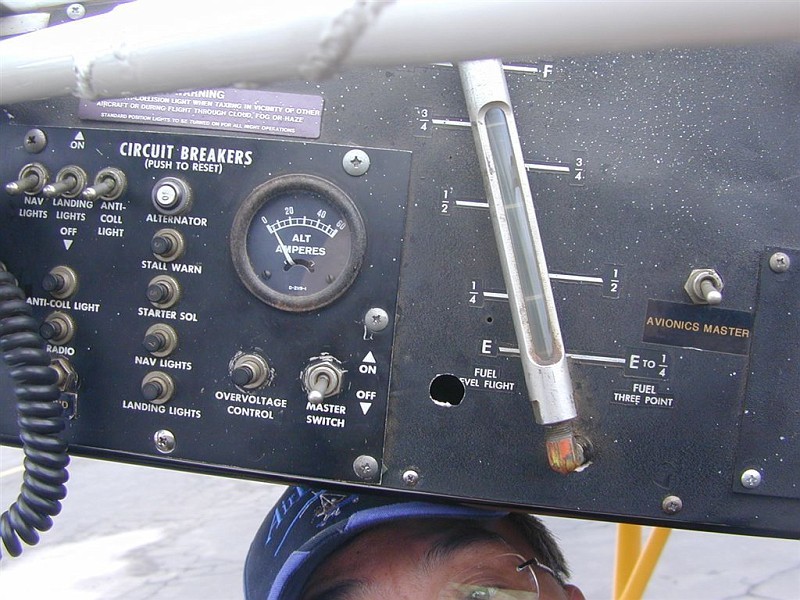So often I read about someone saying “I have a 2hr fuel endurance”.
In reality their plane might cruise for 5hrs, but they never know because they have
Yet, a totaliser is “cheap”.
Why don’t many more people fit one?
Because most people do not travel long distances in light aircraft? Most go for a run out for an hour, land for a coffee and cake, then return in time for tea and medals.
That was one of the first investments after i got my father’s Warrior in 1995. After flying around with 70s avionics for 5 years (no money to invest) In 2000 i bought a Garmin 430, GTX327, GMA340 – and i installed an FS-450 fuel totalizer, connected to the 430.
It is very precise when correctly installed AND calibrated, mine +/- 2 Liters!
I still wonder why those weren’t standard equipment already many years ago … a mystery when you see how many fuel related accidents there are …
Neil:
a fuel totalizer is not only helpful for long distance flights but almost more so if you do short hops every other day. Without a totalizer you lose track of the fuel left very quickly which always made me top of the airplane for even short flights.
Now, with the Cirrus anyway, i write down the renaining fuel before shutdown – and the next time i do an ice cream run with the kids i know exactly how much fuel i have.
Flyer59 wrote:
Now, with the Cirrus anyway, i write down the renaining fuel before shutdown – and the next time i do an ice cream run with the kids i know exactly how much fuel i have
So long as someone hasn’t stolen some in the week since you last flew!.
I would suggest many just “fill her up” before they go, or put fuel “up to the tabs” each time they fly.
Don’t get me wrong, I am used to flying aircraft with VERY good fuel gauges and totalizers, and I have even specified one (CGR30P) in the new panel for my Super Cub. I am just putting forward the reason they aren’t more commonplace.
The real question is “why don’t people fit proper gauges to begin with”. The fuel totaliser is a band-aid solution to an otherwise simple problem, and a solution that induces the potential for human error every time you adjust the FOB quantity. In 1955 maybe, but in 2015 how hard can it be to design a proper gauge?!
Ironically the 1940’s design of fuel gauge on the Super Cub is fairly idiot proof.
[Photo from the internet, not my aircraft]

… and that same design still works very fine in my 2010-built plane.
The real question is “why don’t people fit proper gauges to begin with”. The fuel totaliser is a band-aid solution to an otherwise simple problem, and a solution that induces the potential for human error every time you adjust the FOB quantity. In 1955 maybe, but in 2015 how hard can it be to design a proper gauge?!
You can, and modern capacitive gauges are accurate to maybe 3% of full scale, but a totaliser gives you the GPS-linked LFOB (landing fuel on board) computation, continuously updated. The alternative would be encoding the fuel quantity from the fuel gauges but that would be difficult to use for the LFOB calculation because it would not be inherently monotonic. It would have to be averaged over very long periods.
Totalisers are not foolproof and are not suitable if the plane is shared with people you do not completely trust (which is IMHO true for most syndicates or rental situations). When I used to rent out my TB20 I had one renter who fiddled with the FOB setting, to get lower fuel invoices from me. He was an instructor, with a fake ATPL… If somebody fiddled with it only a little (say, they wound the FOB from 76 USG to 80 USG) you would not notice, and on your next 800nm flight you will be way short. An on your next fill you will also be presented with the dilemna of whether the pump is ripping you off (not unknown in certain parts of Europe, though much better on the last 5 years or so) or there is something seriously wrong with your plane (a fuel leak?).
So long as someone hasn’t stolen some in the week since you last flew!.
You can trust me that much that I will always also cross check the totalizer number with the fuel gauge. Also my airplane is in a locked hangar and there has never been a case of fuel stolen at our field.
I disagree with the other statements too. The totalized is the absolutely best way to know how much fuel you have, IMHO. However precise the mechancial gauges are … you can never really know how much fuel EXACTLY you have.
There’s also not much you can mess up. I never fill tanks partially (prefer to take off slightly overweight if necessary) and all i have to do is press “FULL FUEL” and “FIEL DONE”. And, as i said, I write down the remaining fuel and before the next take-off i make a rough calculation if the number can be right.